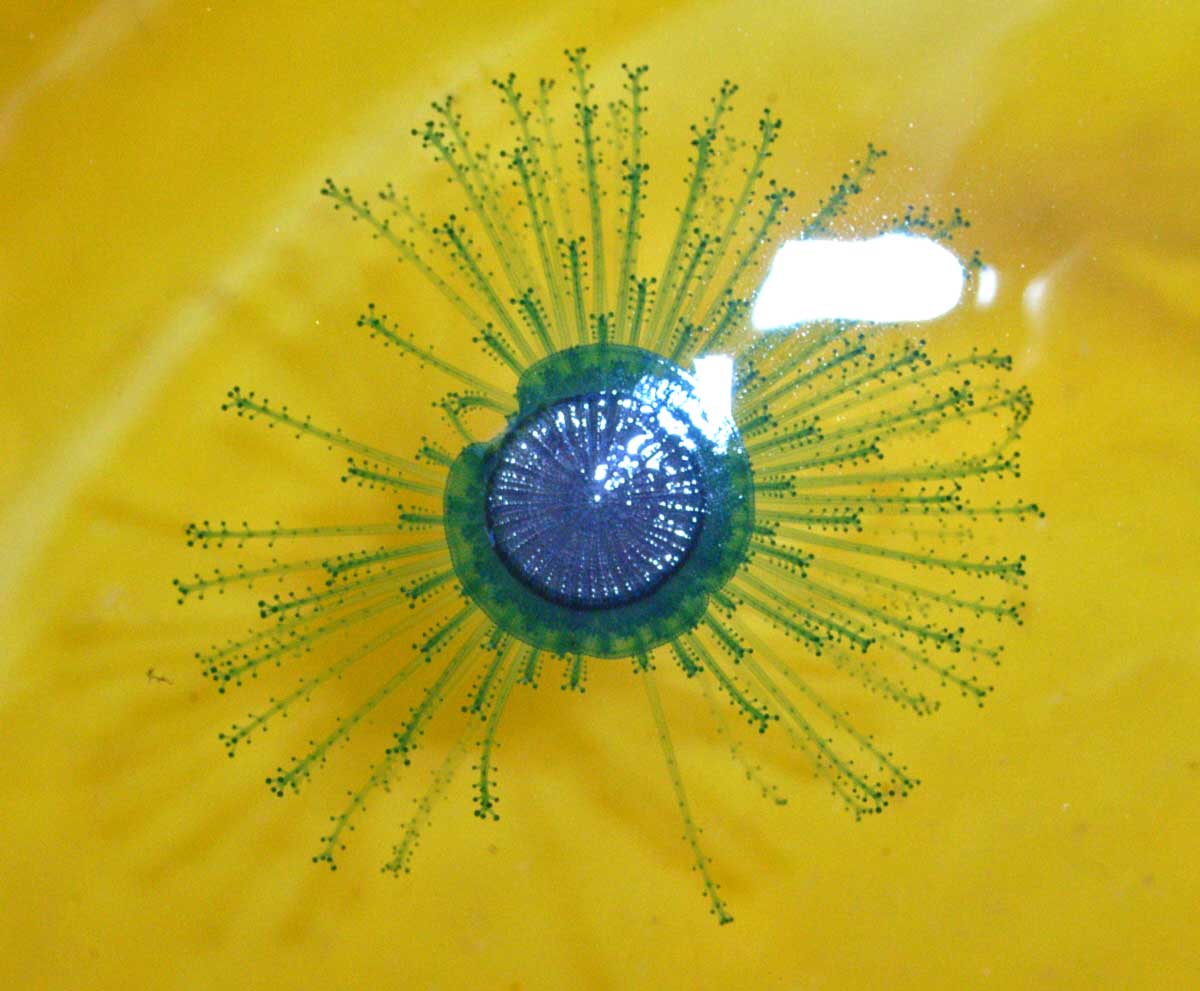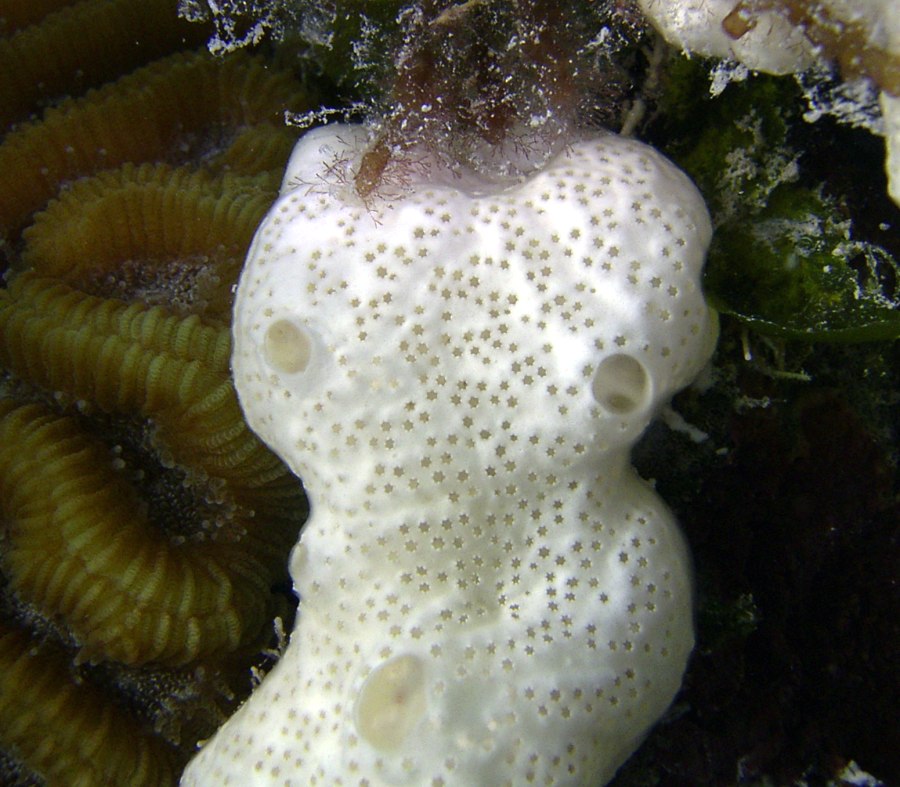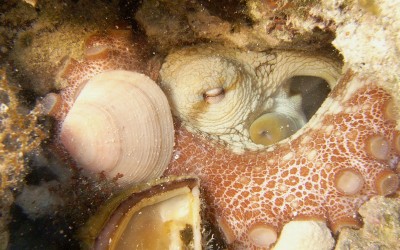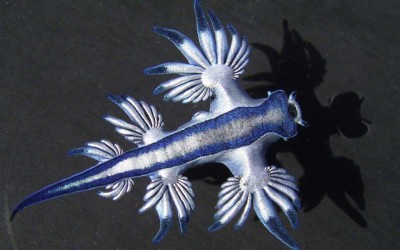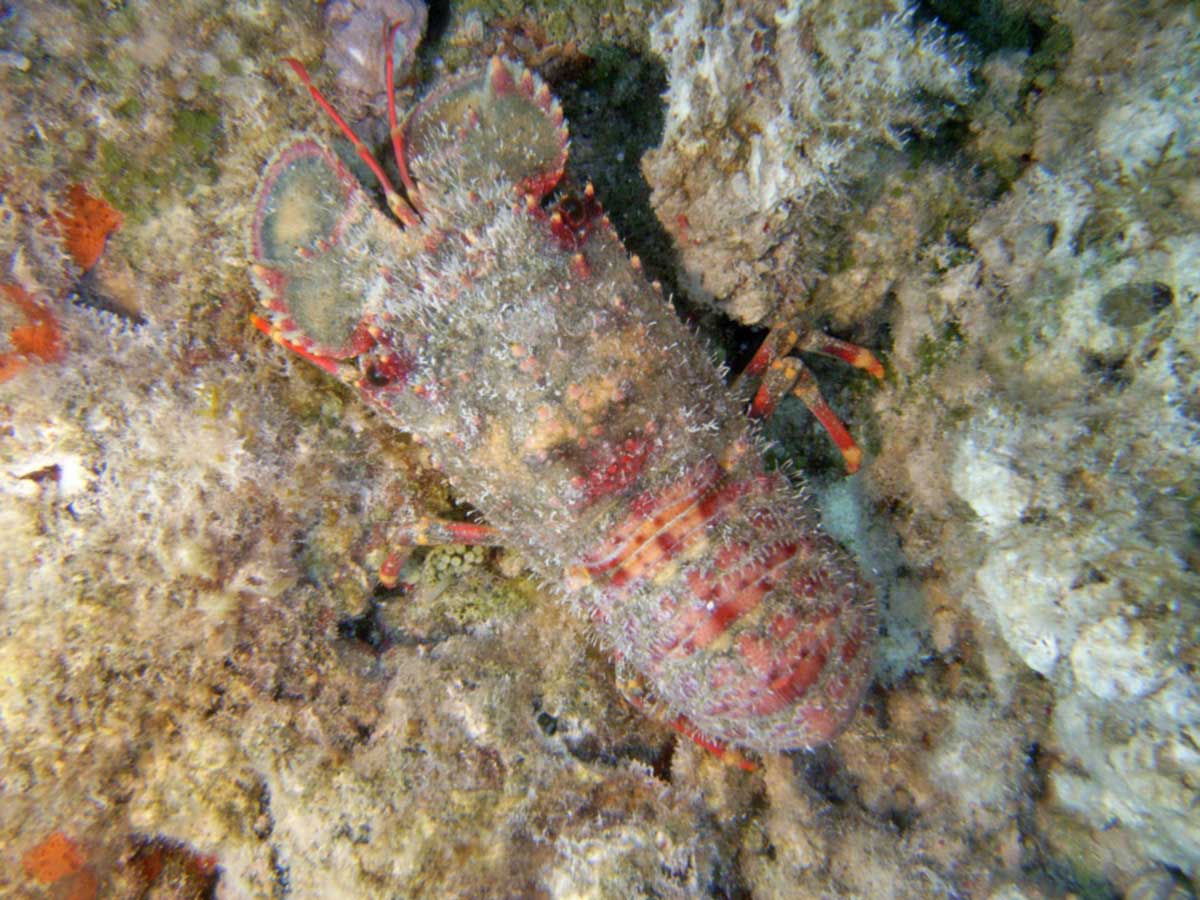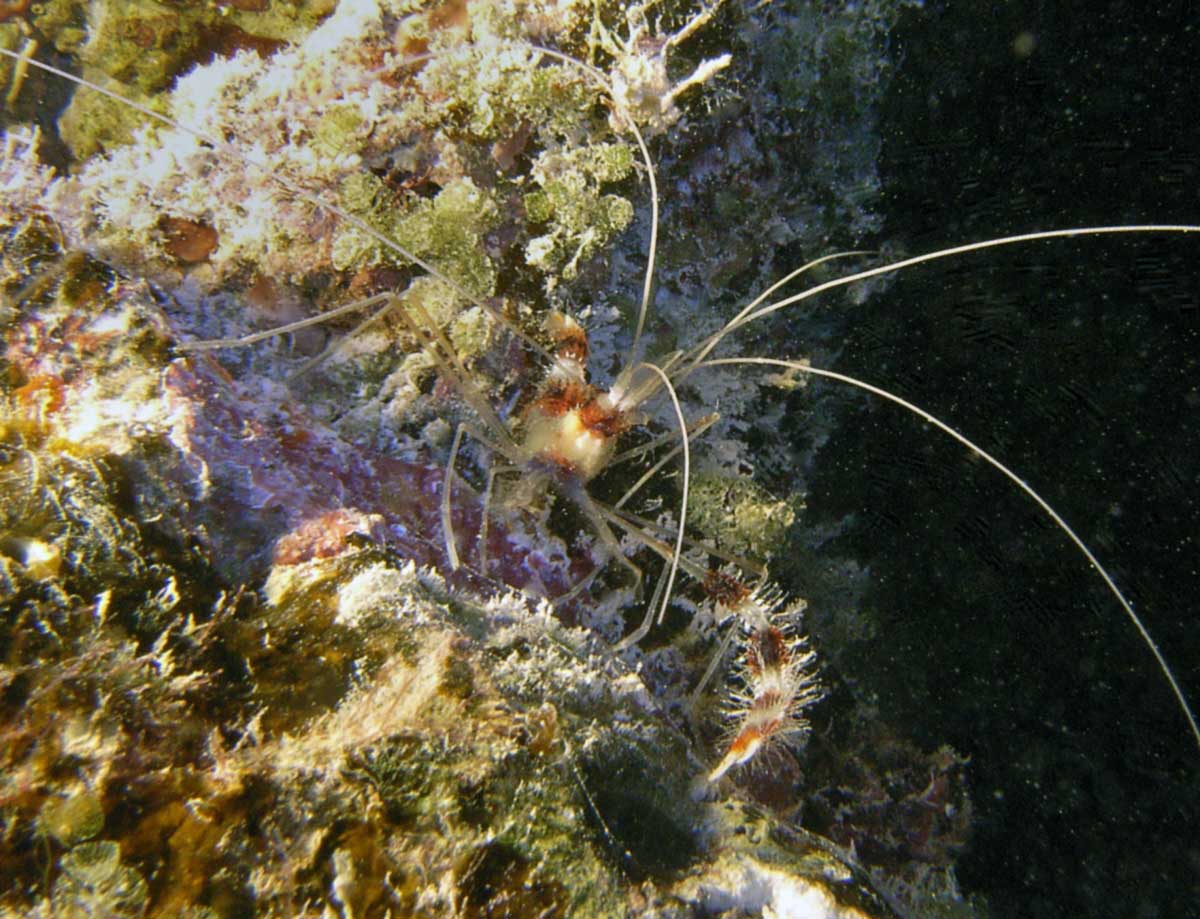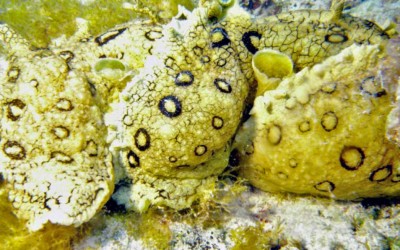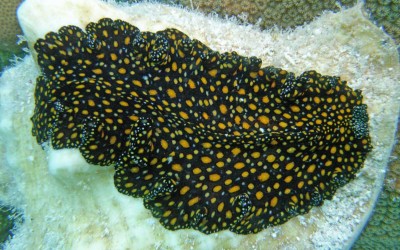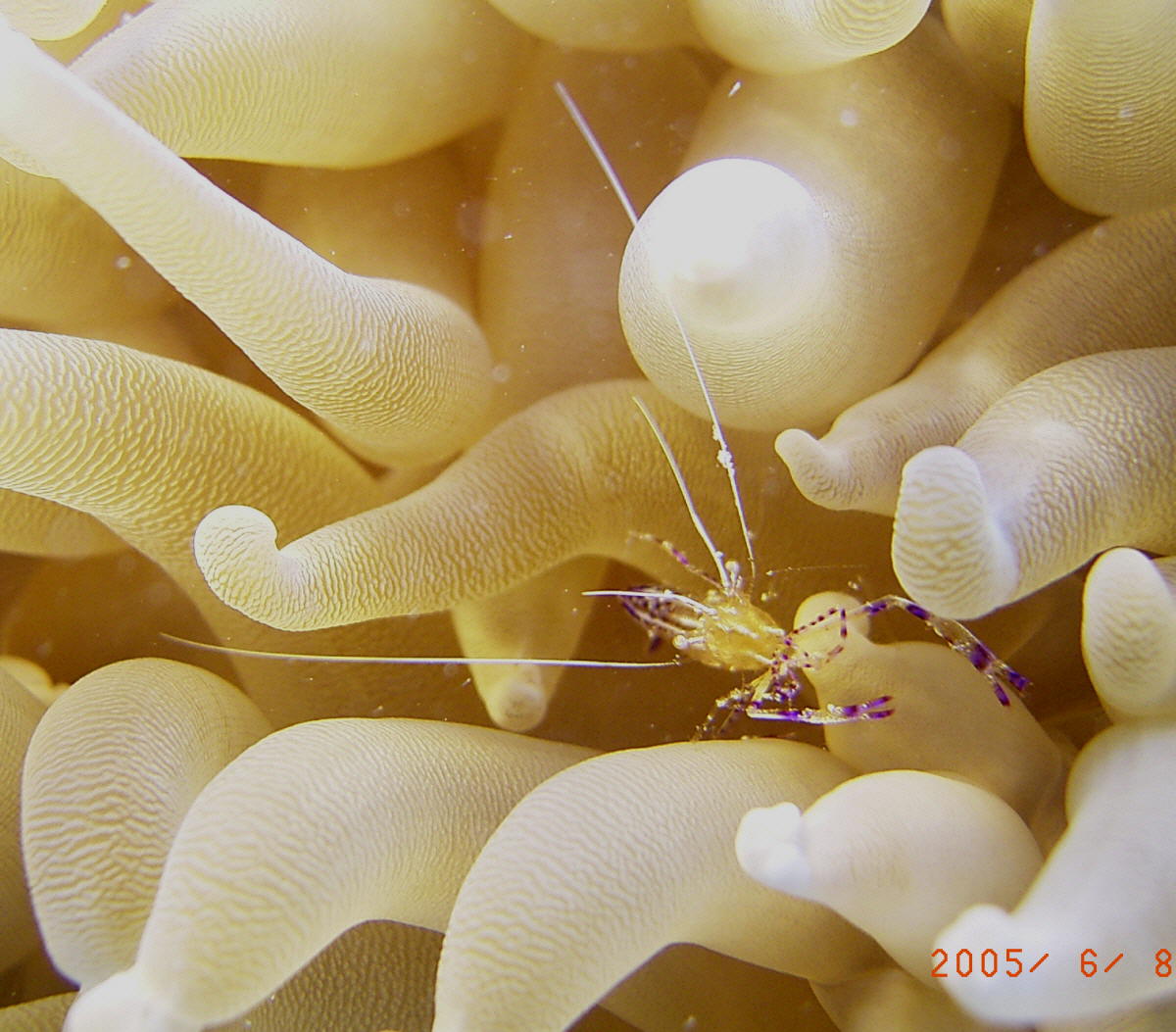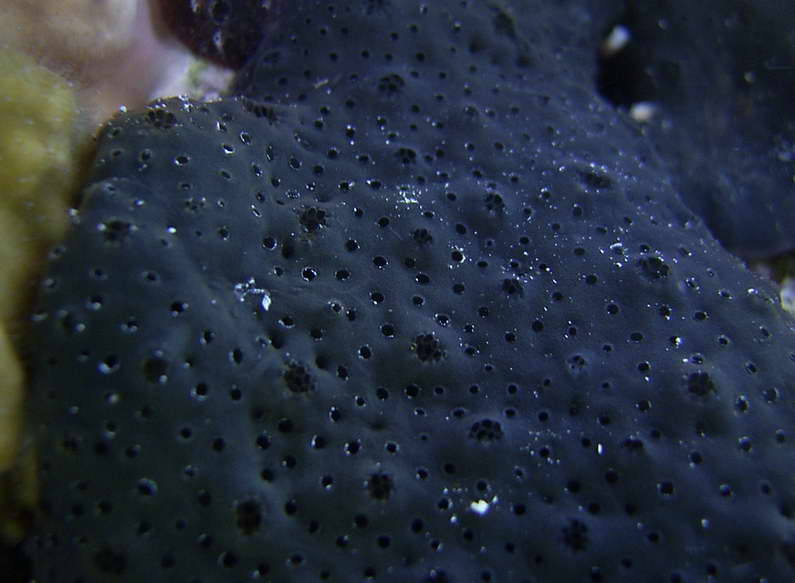Marine Invertebrates
When asked to name an animal, or lots of them, people generally think of ones that come from the one Phylum, Chordata (Things with a backbone). Most of the animals on the planet are invertebrates, including insects and most marine creatures that are not fish, turtles, dolphins and whales.
In biology one either studies vertebrates or all the other Phylum lumped together as invertebrates. This division is rarely helpful as a system, be it a human, an eco-system, or a planet, works as a whole with interacting parts.
Porpita porpita
The blue button lives on the surface of the sea and consists of two main parts: the float and the hydroid colony. The hard float is round, almost flat, and about one inch wide. The hydroid colony, which can range from bright blue turquoise to yellow, resembles...
White Sponge
Though sponges are animal they do not have much you can see moving. Inside they have a whip (flagellum) who's movement causes water flow. Dissolved organic matter, diatoms and other very small goodies stick to a mucous lined membrane and they call that lunch. Sponges...
Octopus
Octopus and squid are the most advanced of all mollusks. They are shape shifting masters of disguise. Like crustaceans they use copper rather than iron in their blood to transport oxygen. Hence their blood is a greeny blue rather than red like ours. Perhaps the...
Glaucus Atlanticus
This is the rarest creature we have ever found. I am pleased my son Ben managed to get some photos before setting it back on its way. This mollusk has no shell as this would make it sink. It eats Portuguese-man-o-wars and keeps the powerful stingers as spoils of war...
Locust Lobster
This is a very primitive looking fellow. His MO is to use the paddle pushers on his front to turn over loose rock and eat the critters scuttling for safety. These crustaceans are rare so they are not on restaurant menus and most lobster divers would leave them alone...
Fairy Shrimp
I have not seen fairy shrimp in Bermuda for many years now. The environment has changed and their specialized niche has shrunk. These candy coloured critters mate for life. If you put a third one in a tank containing two, there will either be a battle to decide a...
Sea Hare
Sea hares are grouped in the Mollusk phylum, along with barnacles, clams and squid. Like squid and octopus they can squirt out ink. Like most snails they are hermaphrodites. They have functional male and female parts once they reach sexual maturity. No they can't...
Leopard Flatworm
Its Latin name is Polycladida pardalis, and it belongs to the phylum, Platyhelminthes. It is easier to call it a leopard flatworm and it looks awesome. It is hermaphroditic and can live up to a year.
Anemonies
Anemones are in the same phylum, Anthozoa, as corals. Their basic commonality is that they are so primitive that they only have one hole. They both eat with their but and throw up poop Unlike corals, which are generally colonial, anemones are usually solitary. They...
Sponges
Sponges are filter feeders. They sift plankton (very small plants and animals that drift in the ocean) out of the water. They do this by means of a wriggling whip that in moving in a snake-like fashion creates a current. The current causes water to flow in and out of...

